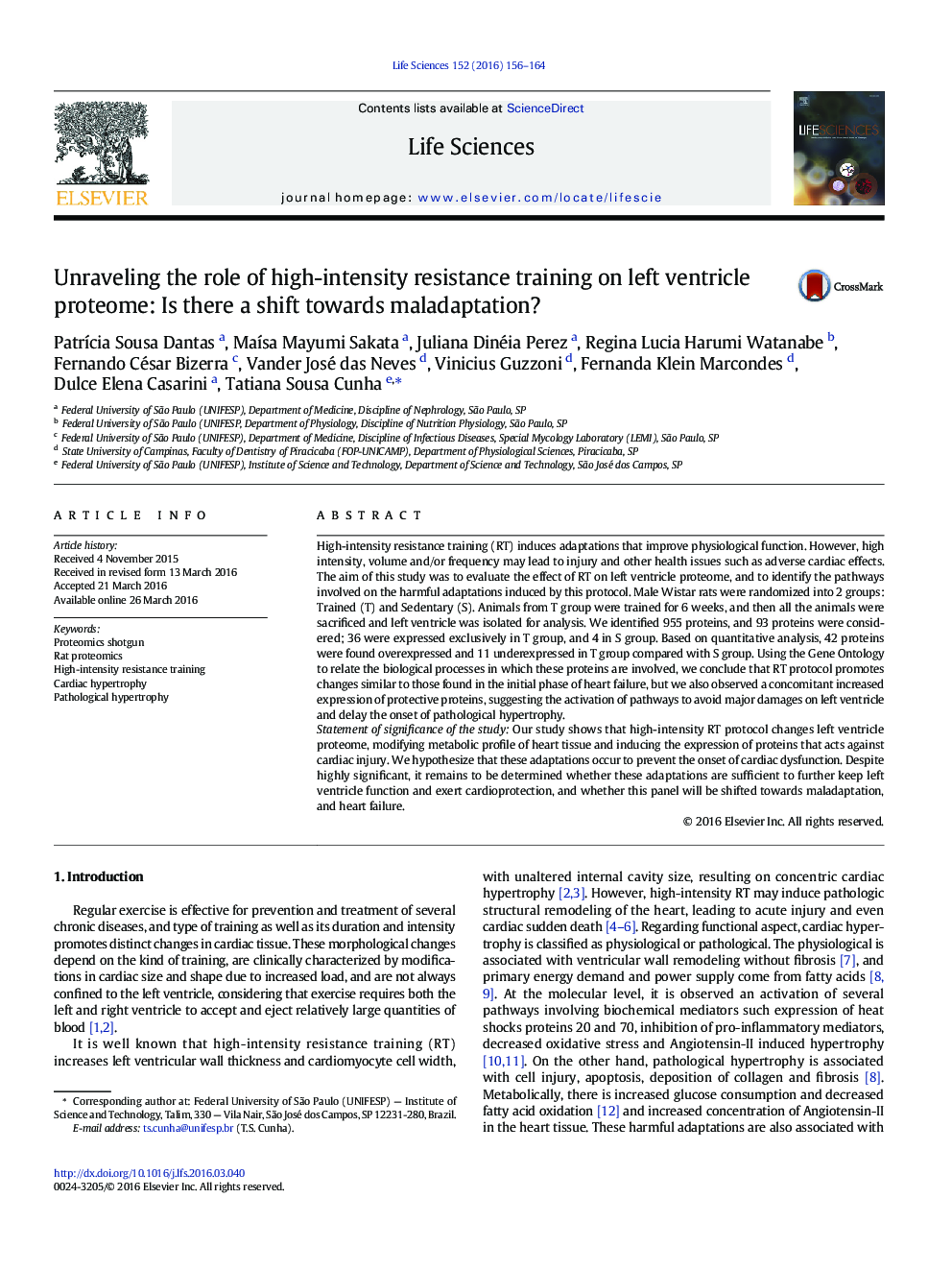| کد مقاله | کد نشریه | سال انتشار | مقاله انگلیسی | نسخه تمام متن |
|---|---|---|---|---|
| 2550503 | 1560576 | 2016 | 9 صفحه PDF | دانلود رایگان |
High-intensity resistance training (RT) induces adaptations that improve physiological function. However, high intensity, volume and/or frequency may lead to injury and other health issues such as adverse cardiac effects. The aim of this study was to evaluate the effect of RT on left ventricle proteome, and to identify the pathways involved on the harmful adaptations induced by this protocol. Male Wistar rats were randomized into 2 groups: Trained (T) and Sedentary (S). Animals from T group were trained for 6 weeks, and then all the animals were sacrificed and left ventricle was isolated for analysis. We identified 955 proteins, and 93 proteins were considered; 36 were expressed exclusively in T group, and 4 in S group. Based on quantitative analysis, 42 proteins were found overexpressed and 11 underexpressed in T group compared with S group. Using the Gene Ontology to relate the biological processes in which these proteins are involved, we conclude that RT protocol promotes changes similar to those found in the initial phase of heart failure, but we also observed a concomitant increased expression of protective proteins, suggesting the activation of pathways to avoid major damages on left ventricle and delay the onset of pathological hypertrophy.Statement of significance of the studyOur study shows that high-intensity RT protocol changes left ventricle proteome, modifying metabolic profile of heart tissue and inducing the expression of proteins that acts against cardiac injury. We hypothesize that these adaptations occur to prevent the onset of cardiac dysfunction. Despite highly significant, it remains to be determined whether these adaptations are sufficient to further keep left ventricle function and exert cardioprotection, and whether this panel will be shifted towards maladaptation, and heart failure.
Journal: Life Sciences - Volume 152, 1 May 2016, Pages 156–164
